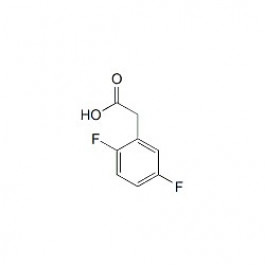New user? / Forgot your password?
0 Item | 0,00 €
Need NMR solvents or supplies? Click here and check out our ARMAR Isotopes catalog!
2,5-Difluorophenylacetic acid
| Item number | 680880 |
| CAS | 85068-27-5 |
| Formula | C8H6F2O2 |
| Molecular weight | 172,13 g/mol |
| Quantity | 1X100MG |
| storage conditions | 20 °C |
Part of Product groups:
Product Variations:
Product | Catalog No./ CAS No. | Quantity | Price | |
|---|---|---|---|---|
 | 680878 | 1X100MG | ||
 | 680881 | 1X100MG | ||
 | 680880 | 1X100MG | ||
 | 680882 | 1X100MG | ||
 | 680879 | 1X100MG | ||
 | 680883 | 1X100MG |



